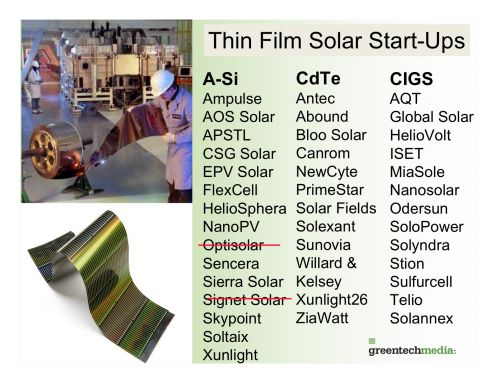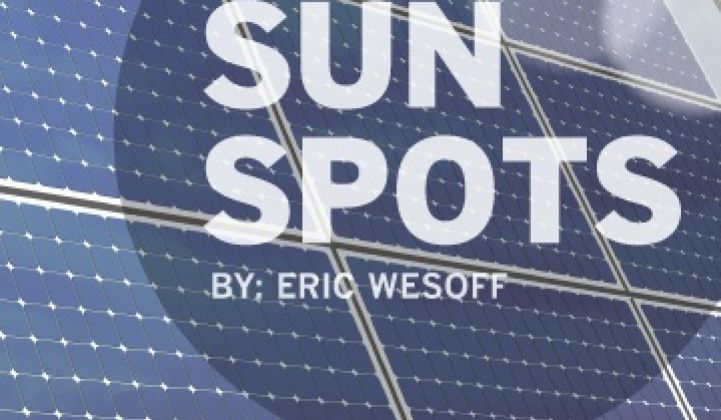SAN FRANCISCO --- Reporting from Intersolar and the SEMI Fab Manufacturer's Forum with a focus on thin film technology and markets.
The question asked at this forum were:
- What are the common issues faced by thin film manufacturers?
- And what will it take for the thin film industry to grow?
Thin film solar panels account for roughly 20 percent of the solar market and First Solar (Nasdaq: FSLR) makes up about half of the thin film market total. First Solar has a two-gigawatt capacity this year and an announced capacity of three gigawatts for next year.
Here are the 2010 thin film rankings:
_574_445_80.jpg)
But what really makes a market? Is it a common set of materials and processes and tools?
If that's the definition -- then there really isn't a PV thin film market according to a (very interesting) presentation by Dr. David Eaglesham, the CTO of First Solar.
Eaglesham made the point that even within the CdTe (cadmium telluride) materials systems, there's no standard process. First Solar uses a Vapor Transport Deposition (VTD) process, while Abound Solar and PrimeStar/GE use a Close Space Sublimation (CSS) process for their CdTe manufacturing. Solexant employs semiconducting nanoparticles in an ink.
And within the CIGS materials system, you'd be hard-pressed to find a pair of vendors using the exact same processing technologies. In the words of Frank Yang, Senior Director, Business Development at Stion -- "Saying CIGS is like saying cake." There are lots of different cake recipes.
Co-evaporation is used by Johanna, Solibro, and Wurth. Nanosolar uses a printing technique. SoloPower uses a process akin to electroplating while Avancis, Stion, and Solar Frontier use a sputtering technique. And each of those players has their own unique spin. Some firms work with cells like AQT, while others create a monolithic module like ISET or Stion.
Helfried Weinzerl, Manager Business Development, Solar PV, at CH2M Hill observed that CIGS could stand for Challenging Industrial and Global Standardization.
In a technology still in rapid growth mode, vendors, especially leading vendors, are going to stubbornly reject efforts to standardize. It's just not in their best interest to standardize -- at least not yet.
Ben Bierman, Executive VP, Operations & Engineering at Solyndra noted that the unique nature of their cylindrical solar product meant that they had to create their own in-situ test equipment. Until an outside vendor arrives with a better solution, Solyndra has no reason to join in a standardization effort, according to Bierman.
Bettina Weiss of SEMI noted that standards will eventually reach thin-film PV just as they have reached crystalline silicon.
Thin film solar technology boasts a superior carbon footprint compared to energy-intensive crystalline silicon solar modules. Eaglesham said that thin film can claim the shortest EPBT (energy payback time) by a large measure -- First Solar's EPBT is 0.8 years (EPBT includes manufacturing and installation).
It's not enough to base a common market on, but it's a shared thin film attribute -- and it's a start.

Sanjay Shresthra of Lazard Capital Markets had hopeful words for the solar market.
When it comes to the U.S. solar market, Shresthra said that by 2013, "We think the U.S. is going to exceed Germany," and that India and China will be the next gigawatt-scale solar markets. Shresthra also said, "Everyone talks about prices falling, but not about demand elasticity." In other words, as prices in solar continue to plunge, new markets will emerge and solar growth will continue. Richard Swanson, founder of SunPower, made a similar point at a recent talk.



